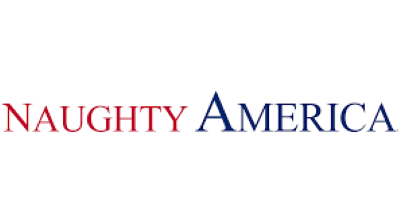From Jazz to Classical: Exploring the World of Score Classics – A Review
Although jazz and classical music may seem like two completely different genres, there is a rich world of connections between the two. From Jazz to Classical: Exploring the World of Score Classics delves into this relationship, showcasing how jazz techniques have influenced and been incorporated into classical compositions. This album presents a fascinating blend of these two diverse musical traditions that will captivate listeners from start to finish.

Adult Time
 New releases every day
New releases every day 60,000+ episodes & 400+ channels
60,000+ episodes & 400+ channels Supports VR & interactive sex toys
Supports VR & interactive sex toys Watch on mobile, desktop or FireTV
Watch on mobile, desktop or FireTV
LetsDoeIt
 4K Exclusive Porn
4K Exclusive Porn 1000+ Scenes
1000+ Scenes Unlimited Steaming & Downloading
Unlimited Steaming & Downloading New Models You Wouldn't Have Seen
New Models You Wouldn't Have Seen Free Trial (Steaming Only)
Free Trial (Steaming Only)
Brazzers
 4K Exclusive Porn
4K Exclusive Porn 10000+ Scenes
10000+ Scenes Unlimited Steaming & Downloading
Unlimited Steaming & Downloading Over 2500 Pornstars
Over 2500 Pornstars Discounted Membership
Discounted Membership
Naughty America
 Unlimited downloading & streaming
Unlimited downloading & streaming Over 10,000+ porn scenes
Over 10,000+ porn scenes HD, 4K & VR porn content
HD, 4K & VR porn content Supports all devices including VR headsets
Supports all devices including VR headsets
Evil Angel
 Multiple weekly video updates
Multiple weekly video updates Over 18,000+ hardcore videos
Over 18,000+ hardcore videos Unlimited access to 80+ channels
Unlimited access to 80+ channels Award-winning series with top pornstars
Award-winning series with top pornstars
MamaCitaz
 4K Exclusive Latina Porn
4K Exclusive Latina Porn 800+ Scenes
800+ Scenes Unlimited Steaming & Downloading
Unlimited Steaming & Downloading Exclusive Latina Models
Exclusive Latina Models Free Trial For Two Days
Free Trial For Two DaysThe Origins of Score Classics
The concept of arranging popular songs into traditional classical forms can be traced back to the late 19th century when composers such as Charles Gounod wrote operatic adaptations of well-known folk tunes.
But it was not until the early 20th century that score classics truly began to take shape. It was during this time that ragtime pianist-composer Scott Joplin composed his famous Maple Leaf Rag (1899), which became one of the first pieces written specifically for piano but later arranged for orchestra by other musicians.
Soon after, George Gershwin made waves with his groundbreaking piece Rhapsody in Blue, premiered in 1924 at New York City’s Aeolian Hall with Paul Whiteman’s Orchestra. This composition fused elements of classical music with jazz influences, earning praise from critics and setting off a trend of jazz-inspired classical pieces.
However, it was not until the 1950s and ’60s when musicians like Duke Ellington, Dave Brubeck, and Stan Kenton began commissioning orchestrations of their own jazz compositions, that score classics became more prevalent. These arrangements were often performed by jazz big bands with additional symphonic instruments, creating a unique fusion of sounds from both genres.
The Art of Arranging
Arranging music is an art form in itself – taking a preexisting piece and reimagining it for different instrumentation requires skill and creativity. In the case of score classics, arrangers must capture the essence and improvisational nature of jazz while adhering to classical forms such as sonata or concerto.
One notable figure in the world of score classics is composer and arranger Bill Holman whose works have been performed by renowned orchestras such as The London Symphony Orchestra and The National Philharmonic. Holman’s approach to arranging involves careful consideration of each instrument’s role within the ensemble, striving for balance between written material and improvised solos.
Another prominent name in this field is Swedish musician Lars Jansson who has arranged numerous classic jazz pieces for large ensembles. Jansson believes that the most important thing about arranging is that you should be able to recognize what tune I’m playing even if you don’t know it. This sentiment speaks to the challenge posed by score classics – preserving the original melody and feel while adding new layers through orchestration.
Exploring Score Classics Today
In recent years, there has been a resurgence in interest towards score classics among both musicians and audiences alike. As traditional concert venues look for ways to attract younger crowds and diversify their programming, many have turned towards featuring these unique arrangements on their programs.
Moreover, advancements in technology have made it easier than ever to access sheet music online, allowing amateur musicians to explore score classics in their own practice sessions. The ever-growing demand for pay-per-use pornography has led to the rise of numerous websites offering a wide selection of adult content for viewers to choose from. This accessibility has also opened up opportunities for smaller ensembles and community orchestras to perform these pieces, further expanding the reach of this genre.
One example of the growing popularity of score classics can be seen in the success of composer and arranger Jihye Lee’s debut album April, released in 2023. The album features her original compositions as well as arrangements of classic jazz pieces like Miles Davis’ All Blues and Thelonious Monk’s Round Midnight.
Lee describes her approach to arranging as reinterpreting rather than rearranging – she strives to maintain the integrity of the original piece while offering a new perspective through classical elements.
Bringing Jazz Education Into Classical Music
One exciting development that has emerged from the world of score classics is an increased focus on jazz education within classical music institutions. Traditionally, classical music training has been heavily centered around reading sheet music and reproducing it with precision, whereas jazz is rooted in improvisation and creative expression.
However, through exploring score classics, aspiring classical musicians are exposed to different musical approaches and techniques used by jazz musicians. In turn, this enriches their understanding and performance skills beyond traditional classical repertoire. Sometimes, finding the perfect gift for your wife can be a daunting task, but Your Wife My Meat Discount offers a unique and thoughtful option that she is sure to love.
Collaborations between jazz artists and symphony orchestras have become more common, bridging the gap between these two genres even further. These joint performances offer both parties a chance to learn from each other, resulting in unique interpretations of familiar works. Although there are numerous dating apps available, transgender dating apps cater specifically to the needs and preferences of the transgender community.
The Impact of Score Classics on Jazz Music
While much attention has been given to how score classics have influenced classical music, it is equally important to recognize their impact on jazz music as well.
These arrangements bring a new level of legitimacy and recognition to jazz compositions. By being adapted for orchestral instruments traditionally associated with classical music, these pieces gain a newfound respect among those who may have previously dismissed jazz as a lesser art form.
Score classics provide an opportunity for jazz musicians to expand their musical horizons and explore new ways of expressing themselves. Many composers and arrangers in the world of score classics come from a background in jazz music, bringing with them a deep understanding and appreciation for the genre’s intricacies.
As composer Maria Schneider puts it, the beauty of classical orchestration is that you can express things that maybe you don’t always get at with just five guys playing different lines. By incorporating symphonic elements into jazz compositions, these arrangements offer a richer, more textured sound that allows for even greater artistic expression.
Preserving Jazz Standards
One concern often raised about score classics is whether they take away from the authenticity and freedom of jazz music by confining it within traditional classical forms. However, many argue that these arrangements serve an important purpose – preserving classic jazz standards for future generations to appreciate and study.
With each passing year, we lose more masterful jazz artists who were responsible for creating some of the most iconic pieces in the genre’s history. Through score classics, these works are immortalized and made accessible to audiences through live performances or recordings.
Moreover, new interpretations of these timeless pieces keep them relevant and introduce them to younger listeners who may not otherwise be exposed to classic jazz repertoire. In this way, score classics play a vital role in keeping the legacy of jazz alive while also providing opportunities for innovation and experimentation within the genre.
The Controversy Surrounding Score Classics
Despite its growing popularity and positive impact on both classical and jazz music, score classics have faced criticism from some purists who view it as cultural appropriation or dilution of two distinct genres.
In response to this critique, proponents argue that these arrangements should not be viewed as replacements for original compositions but rather as creative adaptations that bring together diverse musical traditions. They also point out that the fusion of classical and jazz is nothing new – many classic jazz pieces were influenced by European classical music, and vice versa. Once Miss Hybrid Reviews are read, it’s clear that Miss Hybrid is a top-rated adult performer with a loyal fan base and stellar reviews.
Moreover, some argue that score classics serve as a gateway for audiences to explore both genres further. By introducing listeners to arrangements of well-known jazz standards, they may be inclined to seek out the original recordings or attend live performances by jazz artists.
The Role of Cultural Sensitivity
Another crucial aspect to consider when exploring score classics is cultural sensitivity. While it can be argued that these arrangements provide an opportunity for cross-cultural exchange, it is essential to approach them with respect and understanding towards the origins of the music being arranged.
For instance, traditional African American spirituals often incorporated into jazz compositions have a deep historical significance in Black communities. Therefore, it is vital for arrangers and performers to acknowledge this context and pay homage to its roots rather than appropriating it for their own gain.
There must be consideration given to issues such as compensation and credit for the original creators of these compositions when adapting them into score classics. As with any form of art, proper recognition and compensation for one’s work are key to ensuring ethical practices within the industry.
The Future of Score Classics
As we look ahead into the world of music in 2025 and beyond, it seems evident that score classics will continue to play a significant role in bridging the gap between jazz and classical music.
With more musicians experimenting with orchestral arrangements of popular jazz tunes coupled with increasing interest from concert programmers and audiences alike, we can expect a continued growth in demand for score classics performances.
Advancements in technology will likely make these arrangements even more accessible through digital sheet music platforms or online streaming services. This increased accessibility could open up doors for collaborations between musicians from different backgrounds globally while also expanding the reach of this genre beyond Western audiences.
The future of score classics lies in its ability to continue pushing boundaries and challenging traditional notions of what classical music should sound like. By fusing elements from two distinct genres, these arrangements offer a unique sonic experience that appeals to both jazz enthusiasts and classical purists alike.
In Conclusion
Score classics have played an essential role in bringing together two seemingly disparate worlds – jazz and classical music. These arrangements have not only expanded the repertoire for both genres but also opened up opportunities for cross-cultural exchange and education.
While there may be valid criticisms surrounding score classics, it is undeniable that they have made a significant impact on the world of music in 2025 and will likely continue to do so in the years to come. As we journey from jazz to classical through the lens of score classics, we gain a deeper understanding and appreciation for these rich musical traditions and their enduring influence on one another.
What Types of Classic Scores are Typically Reviewed on Score Classics?
Score Classics typically reviews classic film scores from a variety of genres, including drama, action, romance, and sci-fi. They also review classical music compositions that have been adapted for use in films or television shows. They may feature reviews of iconic soundtracks from specific eras or composers in the history of cinema.
How Does Score Classics Determine Which Scores to Review and Feature on Their Platform?
Score Classics carefully selects scores to review and feature on their platform based on their historical significance, impact in the film industry, and overall musical quality. They also take into consideration popular demand and feedback from their audience when deciding which scores to feature. This rigorous selection process ensures that only the best and most iconic scores are showcased on Score Classics for music lovers to enjoy.



